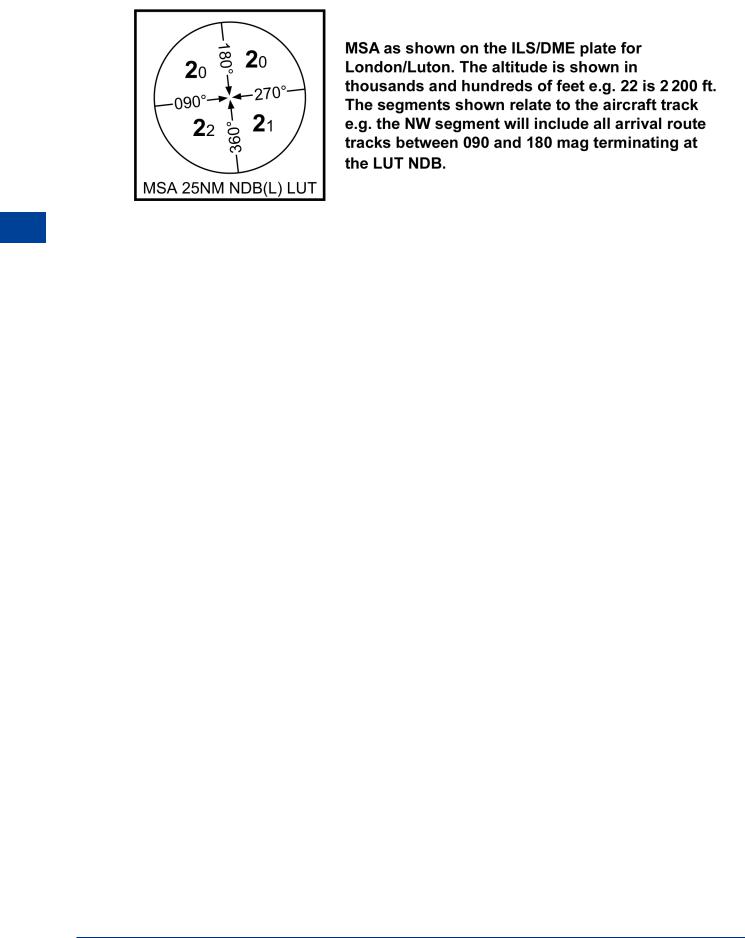
- •Textbook Series
- •Contents
- •1 Definitions
- •Introduction
- •Abbreviations
- •Definitions
- •2 International Agreements and Organizations
- •The Chicago Convention
- •International Law
- •Commercial Considerations
- •Customs and Excise, and Immigration
- •International Obligations of Contracted States
- •Duties of ICAO Member States
- •Status of Annex Components
- •The International Civil Aviation Organization (ICAO)
- •The Organization of ICAO
- •Regional Structure of ICAO
- •Regional Structure and Offices
- •ICAO Publications
- •Other International Agreements
- •The Conventions of Tokyo, the Hague and Montreal
- •The Warsaw Convention
- •The Rome Convention
- •IATA
- •ECAC
- •EASA
- •Eurocontrol
- •World Trade Organization
- •Geneva Convention
- •EU Regulation 261/2004
- •Questions
- •Answers
- •3 Airworthiness of Aircraft
- •Introduction
- •Airworthiness
- •Questions
- •Answers
- •4 Aircraft Nationality and Registration Marks
- •Introduction
- •Nationality and Registration Marks
- •Certification of Registration
- •Aircraft Markings
- •Classification of Aircraft
- •Questions
- •Answers
- •5 Flight Crew Licensing
- •Introduction
- •Definitions
- •General Rules Concerning Licensing
- •Licences and Ratings for Pilots
- •Multi-crew Pilot Licence (MPL)
- •Instrument Rating (Aeroplane) (IR(A))
- •Instructor and Examiner Rating
- •JAR-FCL 3 Medical Requirements
- •Pilot Proficiency
- •EASA Theoretical Knowledge Examinations
- •Questions
- •Answers
- •6 Rules of the Air
- •History
- •Applicability of the Rules of the Air
- •General Rules
- •Visual Flight Rules
- •Instrument Flight Rules
- •Semi-circular Flight Level Rules and RVSM
- •Special VFR
- •Distress and Urgency Signals
- •Restricted, Prohibited or Danger Areas
- •Signals for Aerodrome Traffic
- •Marshalling Signals
- •Flight Deck Signals
- •Questions
- •Answers
- •Instrument Procedures
- •PANS OPS
- •Instrument Departure Procedures
- •Questions
- •Answers
- •8 Approach Procedures
- •Procedure Basics
- •Approach Procedure Design
- •Obstacle Clearance Altitude/Height
- •Operating Minima
- •Descent Gradients
- •Track Reversal and Racetracks
- •Missed Approach Segment and Procedure
- •Published Information
- •RNAV Approach Procedures based on VOR/DME
- •Questions
- •Answers
- •9 Circling Approach
- •Circling Approach
- •Questions
- •Answers
- •10 Holding Procedures
- •Holding Procedures
- •Entry Sectors
- •ATC Considerations
- •Obstacle Clearance
- •Questions
- •Answers
- •11 Altimeter Setting Procedure
- •Altimeter Setting Objectives
- •Transition
- •Phases of Flight
- •Questions
- •Answers
- •12 Parallel or Near-parallel Runway Operation
- •Safety
- •Runway Spacing
- •Questions
- •Answers
- •13 SSR and ACAS
- •Airborne Collision Avoidance System (ACAS)
- •Questions
- •Answers
- •14 Airspace
- •Introduction
- •Control Areas and Zones
- •Classes of Airspace
- •Required Navigation Performance (RNP)
- •Airways and ATS Routes
- •Questions
- •Answers
- •15 Air Traffic Services
- •Introduction
- •Air Traffic Control
- •ATC Clearances
- •Control of Persons and Vehicles at Aerodromes
- •The Flight Information Service
- •The Alerting Service
- •Procedures
- •Questions
- •Answers
- •16 Separation
- •Concept of Separation
- •Vertical Separation
- •Horizontal Separation
- •Radar Separation
- •Procedural Wake Turbulence Separation
- •Radar Wake Turbulence Separation
- •Visual Separation in the Vicinity of Aerodromes
- •Stacking
- •Questions
- •Answers
- •17 Control of Aircraft
- •Procedural ATC
- •Radar Control
- •Radar Identification
- •Radar Service
- •Aerodrome Control
- •Approach Control Service
- •Air Traffic Advisory Service
- •Aircraft Emergencies
- •Questions
- •Answers
- •18 Aeronautical Information Service (AIS)
- •Introduction
- •General
- •The Integrated Aeronautical Information Package
- •The Aeronautical Information Publication (AIP)
- •Notices to Airmen (NOTAM)
- •SNOWTAM
- •ASHTAM
- •Aeronautical Information Circulars (AICs)
- •Pre-flight and Post-flight Information
- •Questions
- •Answers
- •Introduction
- •Aerodrome Reference Code
- •Glossary of Terms
- •Aerodrome Data
- •Runways
- •Taxiways
- •Aprons
- •Questions
- •Answers
- •Requirements
- •Visual Aids for Navigation
- •Runway Markings
- •Taxiway Markings
- •Signs
- •Markers
- •Visual Docking Guidance Systems
- •Questions
- •Answers
- •21 Aerodrome Lighting
- •Aerodrome Lights
- •Approach Lighting Systems
- •Runway Lighting
- •Taxiway Lighting
- •Questions
- •Answers
- •22 Obstacle Marking and Aerodrome Services
- •Introduction
- •Visual Aids for Denoting Obstacles
- •Visual Aids for Denoting Restricted Use Areas
- •Emergency and Other Services
- •Other Aerodrome Services
- •Questions
- •Answers
- •23 Facilitation
- •Entry and Departure of Aircraft
- •Questions
- •Answers
- •24 Search and Rescue
- •Definitions and Abbreviations
- •Establishment and Provision of SAR Service
- •Co-operation between States
- •Operating Procedures
- •Questions
- •Answers
- •25 Security
- •Introduction
- •Objectives
- •Organization
- •Preventative Security Measures
- •Management of Response to Acts of Unlawful Interference
- •Further Security Information
- •Questions
- •Answers
- •26 Aircraft Accident and Incident Investigation
- •Introduction
- •Objective of Investigation
- •Investigations
- •Serious Incidents
- •EU Considerations
- •Questions
- •Answers
- •27 Revision Questions
- •Revision Questions
- •Answers
- •EASA Specimen Examination
- •Answers to Specimen EASA Examination
- •28 Addendum – EASA Part-FCL & Part-MED
- •Chapter Five. Flight Crew Licensing
- •European Aviation Safety Agency (EASA)
- •Licences
- •Ratings
- •Certificates
- •EASA Part-MED
- •29 Index

Chapter
8
Approach Procedures
Procedure Basics . . . . . . . . . . . . . . . . . . . . . . . . |
. . |
. . |
|
. 167 |
Approach Procedure Design . . . . . . . . . . . . . . . . . . . . |
. . |
. . |
|
. 170 |
Obstacle Clearance Altitude/Height |
|
|
|
177 |
Operating Minima . . . . . . . . . . . . . . . . . . . . . . . . |
. . |
. |
. |
177 |
Descent Gradients |
|
|
|
180 |
Track Reversal and Racetracks . . . . . . . . . . . . . . . . . . . . |
. . |
. |
. |
181 |
Missed Approach Segment and Procedure . . . . . . . . . . . . . . . |
. . |
. |
. |
185 |
Published Information . . . . . . . . . . . . . . . . . . . . . . |
. . |
. . |
|
. 186 |
RNAV Approach Procedures based on VOR/DME . . . . . . . . . . . . |
. . |
. . |
|
. 189 |
Questions . . . . . . . . . . . . . . . . . . . . . . . . . . . |
. . |
. |
. |
190 |
Answers . . . . . . . . . . . . . . . . . . . . . . . . . . . . |
. . |
. |
. |
198 |
165

8 |
|
Approach Procedures |
|
||
|
|
|
Procedures Approach 8
166

|
|
|
|
|
|
Approach Procedures |
|
8 |
|
|||
Procedure Basics |
|
|
|
|
||||||||
|
|
|
|
|
|
|
|
|||||
8.1 |
Introduction. Whilst in many ways the problems associated with arrivals are similar |
|
|
|
|
|||||||
to those associated with departures, the primary concern of the procedure designer will |
|
|
|
|
||||||||
inevitably be terrain clearance until the pilot is in a position to land the aircraft once in visual |
|
|
|
|
||||||||
contact with the underlying ground. The initial design of an instrument approach procedure is, |
|
|
|
|
||||||||
in general, dictated by the terrain surrounding the aerodrome. It is also affected by the type of |
|
|
|
|
||||||||
operations and the types of aeroplane flying the procedures. These factors in turn, influence |
|
|
|
|
||||||||
the types and positioning of navigation aids in relation to the runway or aerodrome. As we |
|
|
|
|
||||||||
have already seen for departure procedures, airspace restriction may also affect the design of |
|
|
|
|
||||||||
the procedure. |
|
|
|
|
|
|
|
|
|
|||
8.2 |
Responsibility of ATC. Should a pilot report, or it is clear to ATC that the pilot is |
|
|
|
|
|||||||
|
|
8 |
|
|||||||||
unfamiliar with an instrument approach procedure, the ATCU is responsible for describing the |
|
|
||||||||||
|
|
|
|
|||||||||
procedure to the pilot unless the aircraft is cleared for a straight-in approach. |
|
|
Procedures |
|||||||||
8.3 |
Speed/Categories of Aircraft. As with departure procedures, aircraft speed is an |
|
|
|||||||||
|
|
|
|
|||||||||
important consideration. Whist the critical speed is the speed at which the aircraft crosses the |
|
|
Approach |
|||||||||
threshold of the landing runway (Vat) as this will affect the spacing of aircraft on the approach, |
|
|
||||||||||
approach speeds will determine the dimensions of the areas within which manoeuvring may |
|
|
|
|
||||||||
be carried out and hence the OCH calculations. The table below relates speed to the category |
|
|
|
|
||||||||
of the aircraft (A-E). |
|
|
|
|
|
|
|
|
|
|||
|
|
|
|
|
|
|
|
|
|
|
|
|
|
|
Aircraft |
|
Vat |
Initial Approach |
Final Approach |
Max Speed for |
|
|
|
|
|
|
Category |
|
speed range |
speed range |
Visual Circling |
|
|
|
|
|
||
|
|
|
|
|
|
|
|
|||||
|
|
|
|
|
|
|
|
|
|
|
|
|
|
|
A |
|
<91 |
90/150 (110*) |
70/100 |
100 |
|
|
|
|
|
|
|
|
|
|
|
|
|
|
|
|
|
|
|
|
B |
|
91/120 |
120/180 (140*) |
85/130 |
135 |
|
|
|
|
|
|
|
|
|
|
|
|
|
|
|
|
|
|
|
|
C |
|
121/140 |
160/240 |
115/160 |
180 |
|
|
|
|
|
|
|
|
|
|
|
|
|
|
|
|
|
|
|
|
D |
|
141/165 |
185/250 |
130/185 |
205 |
|
|
|
|
|
|
|
|
|
|
|
|
|
|
|
|
|
|
|
|
E |
|
166/210 |
185/250 |
155/230 |
240 |
|
|
|
|
|
|
|
|
|
|
|
|
|
|
|
|
|
|
|
Vat |
= Speed at threshold based on 1.3 × VS0 or 1.23 × stall speed (VS1g) in landing configuration |
|
|
|
|
|
|||||
|
at max certificated landing mass |
|
|
|
|
|
|
|
|
|||
|
* Maximum speed for track reversal or racetrack procedures |
|
|
|
|
|
|
|||||
|
|
|
|
|
|
|
|
|
|
|
|
|
|
|
|
|
Figure 8.1 Aircraft categories for approach procedures |
|
|
|
|
|
|
||
8.4 Minimum Sector Altitudes (MSA)/Terminal Arrival Altitudes (TAA). For each aerodrome, MSA/TAA are established to provide at least 300 m (984 ft) obstacle clearance within 25 NM of the navigation aid, IAF or IF associated with the approach procedures for that aerodrome. MSA/TAA is shown on all instrument plates and will be the lowest altitude permitted at the appropriate fix (normally the altitude at which the procedure begins). An arriving aircraft is permitted to descend below MSA only when: the aerodrome and underlying terrain are visible and will remain so, the aircraft is under radar control being radar vectored, or the aircraft is flying a published approach procedure.
167

8 |
|
Approach Procedures |
|
||
|
|
|
Procedures Approach 8
Figure 8.2
8.5 Types of Procedure. Broadly, instrument procedures are defined in terms what guidance is provided. ICAO defines these as:
•Precision Procedures (runway approach) Categories I/II/III
•Non-precision Procedures (aerodrome approach)
8.6Precision. A precision approach procedure gives accurate track guidance (azimuth) during the final approach segment and information concerning height above the threshold of the runway (elevation). In all cases external equipment is required to provide the necessary data. By flying the required track and glide path within the required accuracy of half scale deflection of the course deviation indicator (CDI), the aircraft is kept within a protected area which ensures terrain clearance (above OCA/H) throughout the procedure. ILS, MLS and Precision Approach Radar (PAR) are examples of equipment that can be used as part of a precision approach system. In the USA GLS (GPS landing systems) are now in use and first indications are that accuracy in the order of +/- 30 cm to the centre line are achievable. In the design of the procedure (azimuth and elevation requirements), obstacle clearance is implicit if the descent path (glide path) is adhered to. Because a precision approach terminates at the touchdown point (or at the commencement of a missed approach) it is often referred to as a runway approach. For a precision approach the pilot is required to calculate the height on the final approach at which he/she must make a decision either to land or go around (fly the missed approach procedure). This is called Decision Altitude/Height (DA/H) and reflects the Operator’s declared aerodrome operating minima (covered in Operational Procedures). Guidance on the calculation of DA/H is contained in the Operations Manual. DA/H is defined as the specific altitude (or height) in a precision approach at which a missed approach must be initiated if the required visual reference to continue the approach has not been established. The Operator is also required to specify the required visual criteria in the Operations Manual.
8.7Glideslope out. Should the glideslope become unserviceable and the pilot lose glide path indications, the approach become a non-precision approach
8.8Precision Categories. It must be emphasized that at DA/H, if the approach has been flown correctly, the aircraft will be at the place it should be and must therefore be safe, and further descent along track must also be safe (if the visibility was perfect, the aeroplane would be at the same place and height, and the approach would be continued anyway!). Except where the ‘system’ (ground equipment and aeroplane equipment) permits ‘blind’ landing, the latter stage of the final approach will be flown visually (the pilot will need visual reference to complete the landing). In order to accomplish this, a minimum RVR is required and also a visual
168

Approach Procedures |
|
8 |
|
||
|
|
|
means of maintaining the centre line of the runway once on the ground. As technology has advanced, systems, specifically ILS, have become more accurate in track and height guidance. The use of ‘on board’ computer systems (FMS) to interpret received data and to control the aeroplane means that the visual element can be reduced to the minimum. ILS systems are categorized by accuracy of operation. The categories are as follows, but beware; there are anomalies between ICAO and JAR OPS requirements. System Minima is discussed in section 8.31 below. For Air Law, only the ICAO requirements are examinable. The ICAO categories are:
• Cat I System Minima 60 m (200 ft); DH ≥ 60 m (200 ft), and RVR not less than 550 m or ground visibility not less than 800 m
• Cat II System Minima 30 m (100 ft); DH < 60 m (200 ft) but ≥ 30 m (100 ft), and RVR not less than 350 m
•Cat IIIA No system minima; DH < 30 m (100 ft) or no DH, and RVR not less than 200 m
•Cat IIIB No system minima; DH < 15 m (50 ft) or no DH, and RVR less than 200 m but
more than 50 m
• Cat IIIC No system minima; no DH and no RVR requirements
8.9Non-precision. Where there is no ground equipment that can provide height (elevation) data to the aircraft, the procedure is defined as non-precision although the track guidance accuracy may be as good as that required for precision. Non-precision procedures can be established where track guidance is provided by VOR or NDB, or by track guidance elements of precision systems i.e. ILS localizer only or PAR in azimuth only. Another type of non-precision system is surveillance radar on a reduced range scale (SRA). Because there is no reference to touchdown for non-precision procedures and the procedures always terminate above touchdown, the procedures are sometimes referred to as aerodrome approach procedures. Indeed, some procedures are specified for approach to the aerodrome, followed by a circling manoeuvre complying with defined visual criteria to land in a direction other than that of the straight-in approach. This is known as Visual Manoeuvring (Circling) and is discussed in detail in Chapter 9.
8.10Visual Approach. In all cases, once established on final approach, the pilot has the option to continue the approach visually providing, of course, that he/she has the necessary visual criteria specified by the operator. This is not VFR! It is completing the IFR procedure visually. Unless Cat IIIC applies, the pilot will need some form of visual criteria anyway, so if the criterion is obtained at 7 miles from touchdown, what is the difference! However, separation is the responsibility of ATC because there may be aircraft behind and in front of you undertaking instrument approaches.
8.11Completing the Procedure. Once an instrument procedure has been commenced the pilot must complete the procedure as published unless given contrary instructions by ATC. Even if the final approach is flown visually, the requirements of the procedure must be complied with. An instrument approach ends with either a successful landing or completion of the missed approach procedure. In any event, if the procedure is abandoned after passing the IAF, the missed approach procedure must be flown, starting from the MAPt, with the aircraft climbing to the altitude specified for the missed approach as soon as possible (this will usually be the highest MSA or the lowest altitude specified for commencing the procedure at the IAF).
Approach Procedures 8
169
